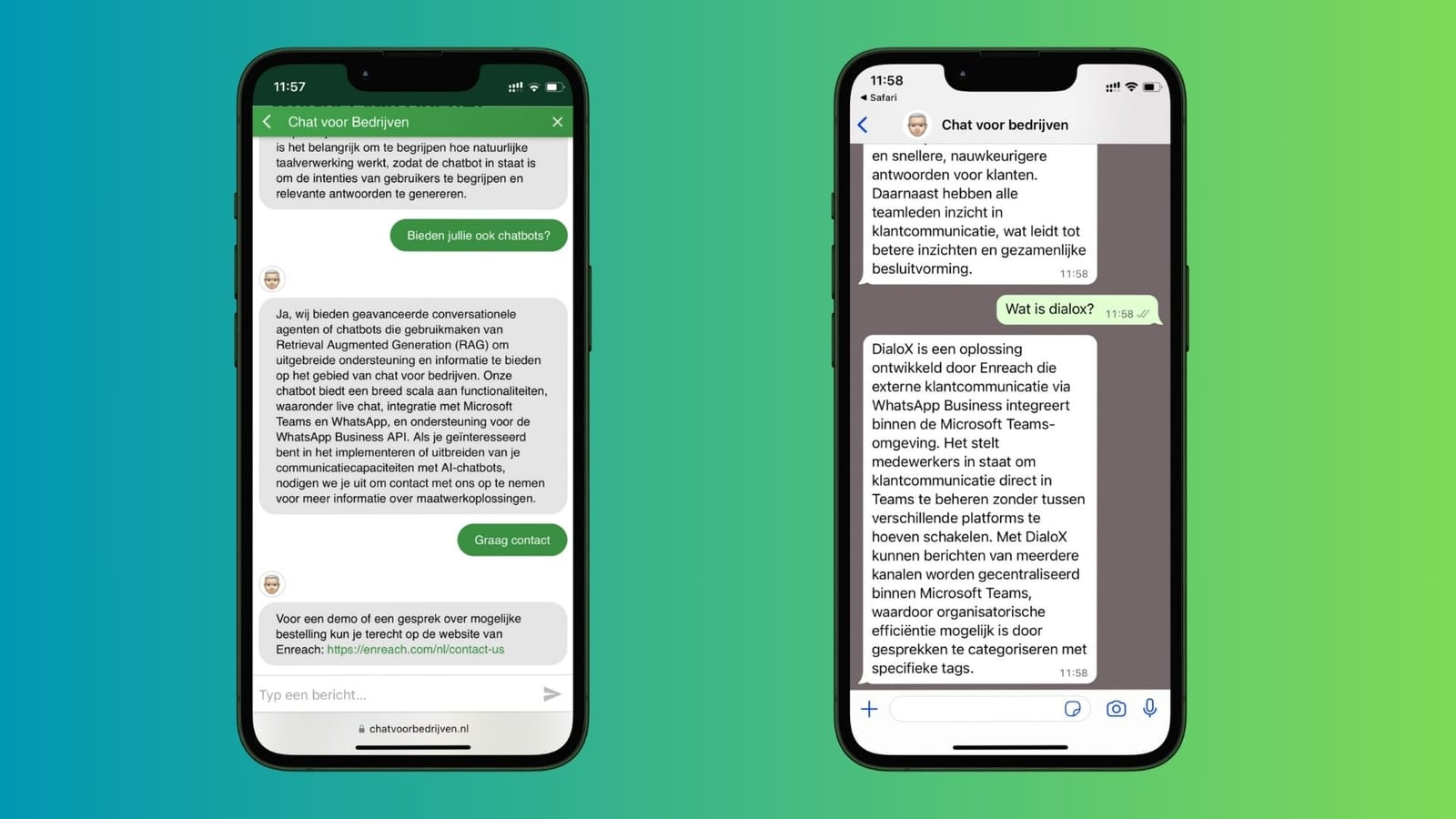My experiences with chatbots based on chatgpt
From web design to AI chatbots: a change from sending to interacting. Learn how ChatGPT and RAG are transforming content creation.

In the digital age we live in, communication technologies are constantly evolving to make our interactions more personal, efficient and meaningful.
My latest adventure has taken me deep into the world of artificial intelligence (AI) and chatbots. I am working with the experts at Enreach to build a totally new chatbot based on ChatGPT and the Retrieval-Augmented Generation (RAG) method.
This project has fundamentally changed my perspective on digital interactions and in this article I am happy to share my experiences, the challenges we encountered and the new opportunities ahead.
My personal background
As a web strategist with more than 30 years of experience, I have seen countless digital products come and go. But the opportunity to develop chatbots with Enreach that not only provide information but also truly understand and anticipate user needs has genuinely surprised me.
The level of personalisation and relevance offered by these chatbots is unparalleled. They can communicate in different languages, adapt the level of information to the user, and accurately understand the user's intent.
This is a fundamental change for how organisations can interact with their audiences.
The power of ChatGPT and RAG
Before I dive into the details, let me explain what ChatGPT and RAG mean to the uninitiated. ChatGPT, developed by OpenAI, is an advanced language model that can simulate natural conversations, answer questions, and even generate content similar to that of a human.
RAG adds an extra layer by retrieving relevant information from a large dataset to enrich ChatGPT's response, making the chatbot even more accurate and informative.
The chatbot in action
What better way to show the potential of this technology than through a direct demonstration? We have decided to release our chatbot as a beta version, accessible via a click on the green circle at the bottom right of the chat voor bedrijven website or via our WhatsApp channel.
This step allows us to gather valuable feedback and see directly the impact of our chatbot on real users.

From sending to interacting
My immersion in building an advanced chatbot with ChatGPT and RAG challenged me in an unexpected way. For years, my approach to content creation focused on shaping web pages and strategically using hyperlinks to make information accessible and appealing to a wide audience. This approach required a rhetorical style tailored to the medium, with carefully chosen design and structure to attract and hold the reader's attention.
The move to working with an AI-powered chatbot required a fundamental shift in my thinking. Suddenly, it was no longer enough to present information statically; I had to dive deeper into the architecture of the content itself, focus on the pure facts and structure it in a new way suitable for interactive conversations. Instead of broadcasting information, I am now involved in a dynamic, two-way conversation with users.
This transition has forced me to rethink the way I think about content. In prompts, I can now specify the style and level of information, but the exact response remains partly unpredictable. This aspect of uncertainty introduces an exciting element of spontaneity and personalisation into the interaction, making each conversation unique. The core difference lies in the evolution of content creation from pure sending to an interactive conversation, where the user is central and plays an active role in steering the conversation.
This new approach to content creation emphasises the importance of deep understanding of user needs and interests, as well as the flexibility to respond to these needs in real-time. It has been a learning experience that has enriched not only my skills as a content creator, but also my appreciation for the potential of AI in creating meaningful and personalised user experiences.
It has also enriched my strategic understanding of how to place these new capabilities in the existing online landscape and the specific offerings of companies and organisations. More on this later.

Stay connected
Feedback so far has been overwhelmingly positive. Users are particularly impressed by the natural conversation flow and the relevance of the information provided by the chatbot.
Our next steps focus on refining the conversation dynamics to not only be informative, but also achieve other goals such as sales, support, and more advanced interactions.
I cordially invite you to experience the chatbot for yourself and share your feedback with us.
By sharing our experiences and lessons learned, we hope to not only inspire but also offer practical insights into the power of AI and chat technology. In the coming months, we will also unveil a new chatbot that provides international education on the RS virus, in partnership with Resvinet.
This article was first published in Dutch on Chat voor Bedrijven.



